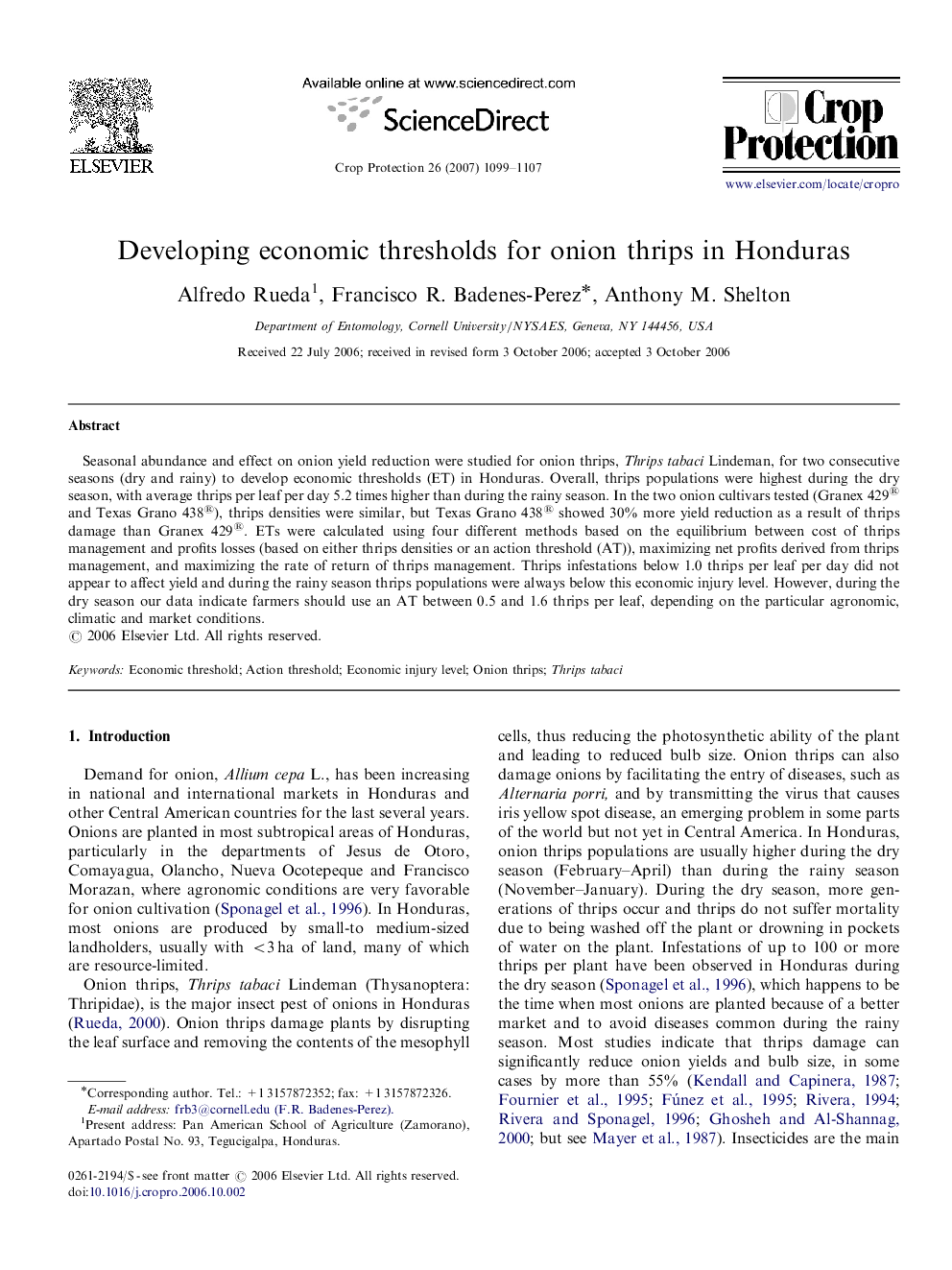| Article ID | Journal | Published Year | Pages | File Type |
|---|---|---|---|---|
| 4507944 | Crop Protection | 2007 | 9 Pages |
Seasonal abundance and effect on onion yield reduction were studied for onion thrips, Thrips tabaci Lindeman, for two consecutive seasons (dry and rainy) to develop economic thresholds (ET) in Honduras. Overall, thrips populations were highest during the dry season, with average thrips per leaf per day 5.2 times higher than during the rainy season. In the two onion cultivars tested (Granex 429® and Texas Grano 438®), thrips densities were similar, but Texas Grano 438® showed 30% more yield reduction as a result of thrips damage than Granex 429®. ETs were calculated using four different methods based on the equilibrium between cost of thrips management and profits losses (based on either thrips densities or an action threshold (AT)), maximizing net profits derived from thrips management, and maximizing the rate of return of thrips management. Thrips infestations below 1.0 thrips per leaf per day did not appear to affect yield and during the rainy season thrips populations were always below this economic injury level. However, during the dry season our data indicate farmers should use an AT between 0.5 and 1.6 thrips per leaf, depending on the particular agronomic, climatic and market conditions.
